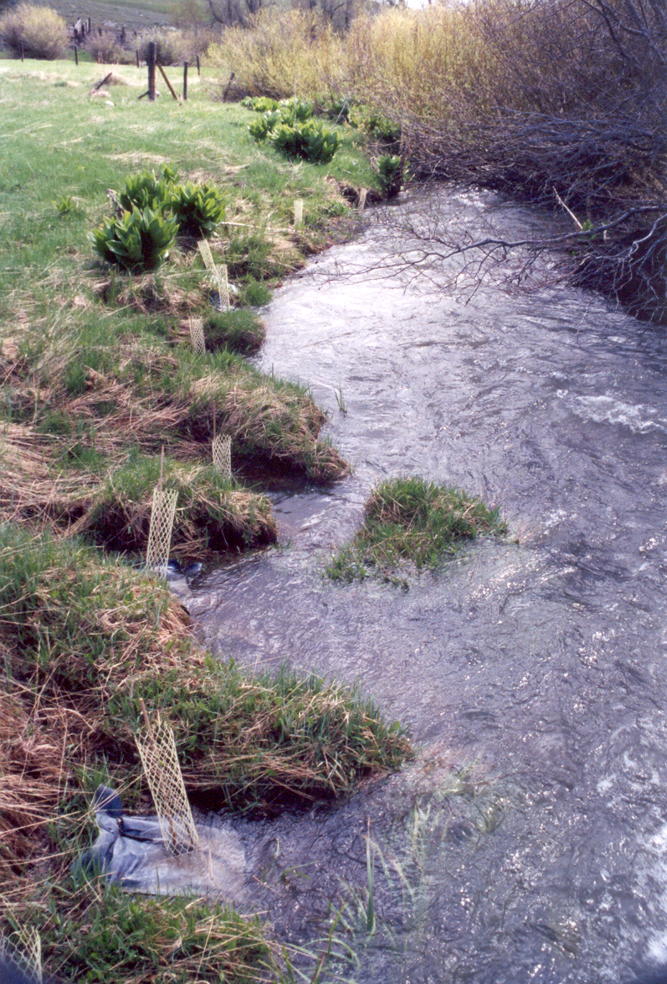RESTORATION AND RECOVERY
Issues
Flooding and Erosion – Fence Mortality – Livestock Trespass – Weeds and Invasive Species – Degraded streams – Dying aspen – Operating Costs.
When we acquired the property, it was affected by past use, principally for grazing cattle and raising hay. This resulted in many problems for native plants, soils, streams and springs, fish, and wildlife. Livestock had grazed native bunchgrasses to the point of their elimination. Seedings for hay had introduced aggressive non-native grasses such as smooth brome and crested wheatgrass that replaced native bunchgrasses and flowers. Aspen shoots were grazed and eliminated, reducing recruitment to the point that the aspen forests were dying out.
Streams and springs had wide and shallow channels, lacking vegetation cover for stream temperature regulation, or pools for spawning fish. Banks were bare and eroding, stream bottoms were covered with silt.
Gullies formed in uplands were lowering the water table, further drying the soils, and leading to the loss of native plant communities. Weeds and invasive species such as Canada thistle, cheatgrass and others were proliferating. Flooding from the drainage system on the County Road through the Preserve was causing gully formation, loss of wetland meadow areas and introducing weeds into the Preserve.
We have partnered with the Forest Service and BLM to reclaim non-system roads and trails to reduce habitat fragmentation and disturbance of wildlife.
Along with restoration, maintenance of the property and its infrastructure are major expenses. As an example, we spend an estimated $20,000 per year on fence construction, conversion to wildlife friendly fences, and maintenance.
Restoration
Active and passive restoration is being used to restore native vegetation, streams, springs, and wetlands.
We have seeded native grasses and planted trees that are now creating a gallery forest along Paris Creek for owls, eagles, and hawks. Willows and aspen have recovered and are shading the streams and providing habitat. Beavers have returned and are building dams, storing sediment and water, and creating fish habitat. Native plants are displacing the invasive cheatgrass.
We are controlling noxious weeds by reseeding with native species and allowing those the time needed to expand and displace the weeds. Progress is being made but more is needed as seeds continue to enter the property from adjacent properties and roads.
We are converting our fences to let-down and wildlife friendly designs that have eliminated deer mortality from fence entanglement. The erosion from the County Road is being brought under control and willow plantings will eventually assist in halting the erosion while creating habitat.
The water diversion that has dewatered Paris Creek for over one hundred years will soon be decommissioned and the water returned to the creek, making several miles available for native Bonneville cutthroat trout to spawn and live here for the first time in over a century.

